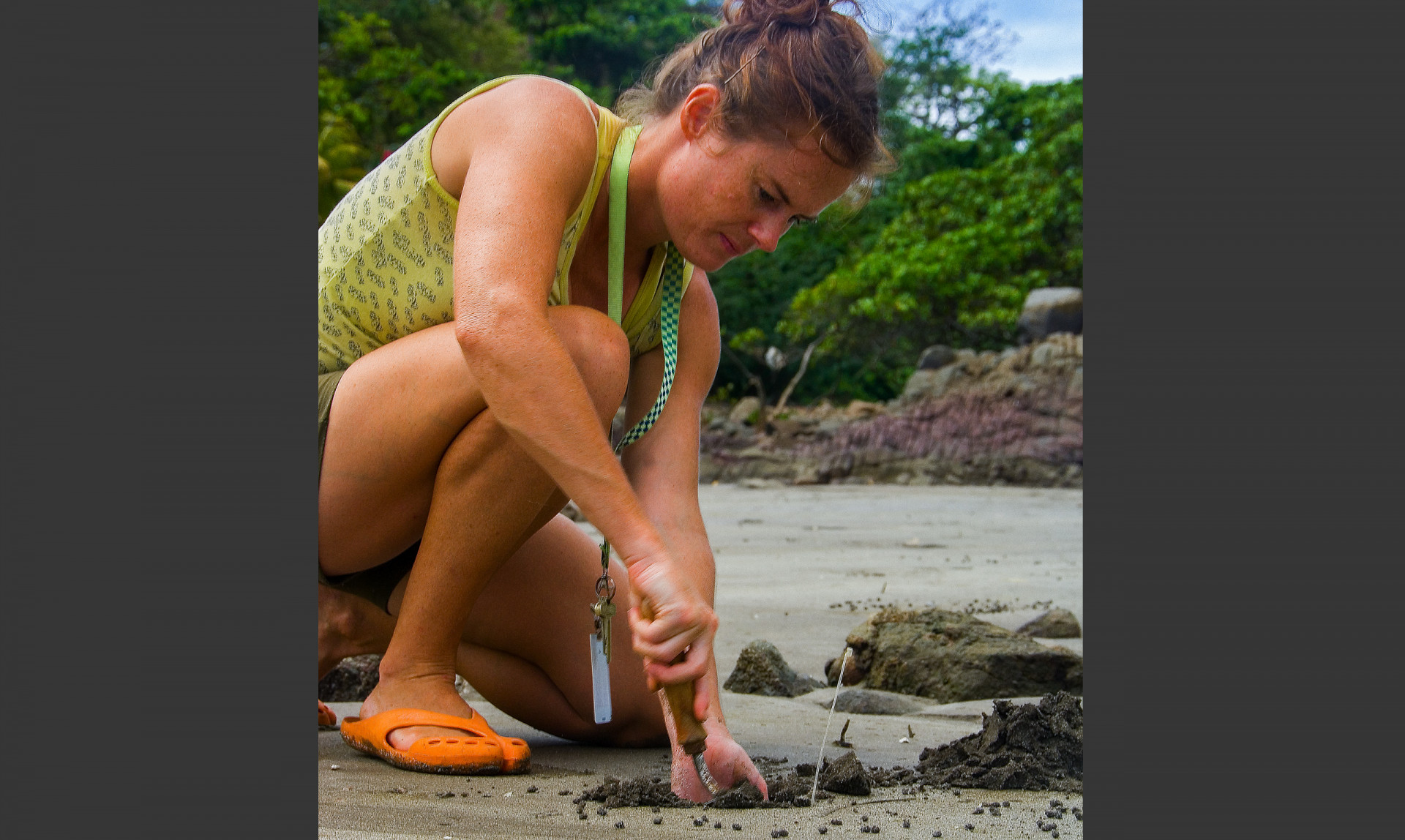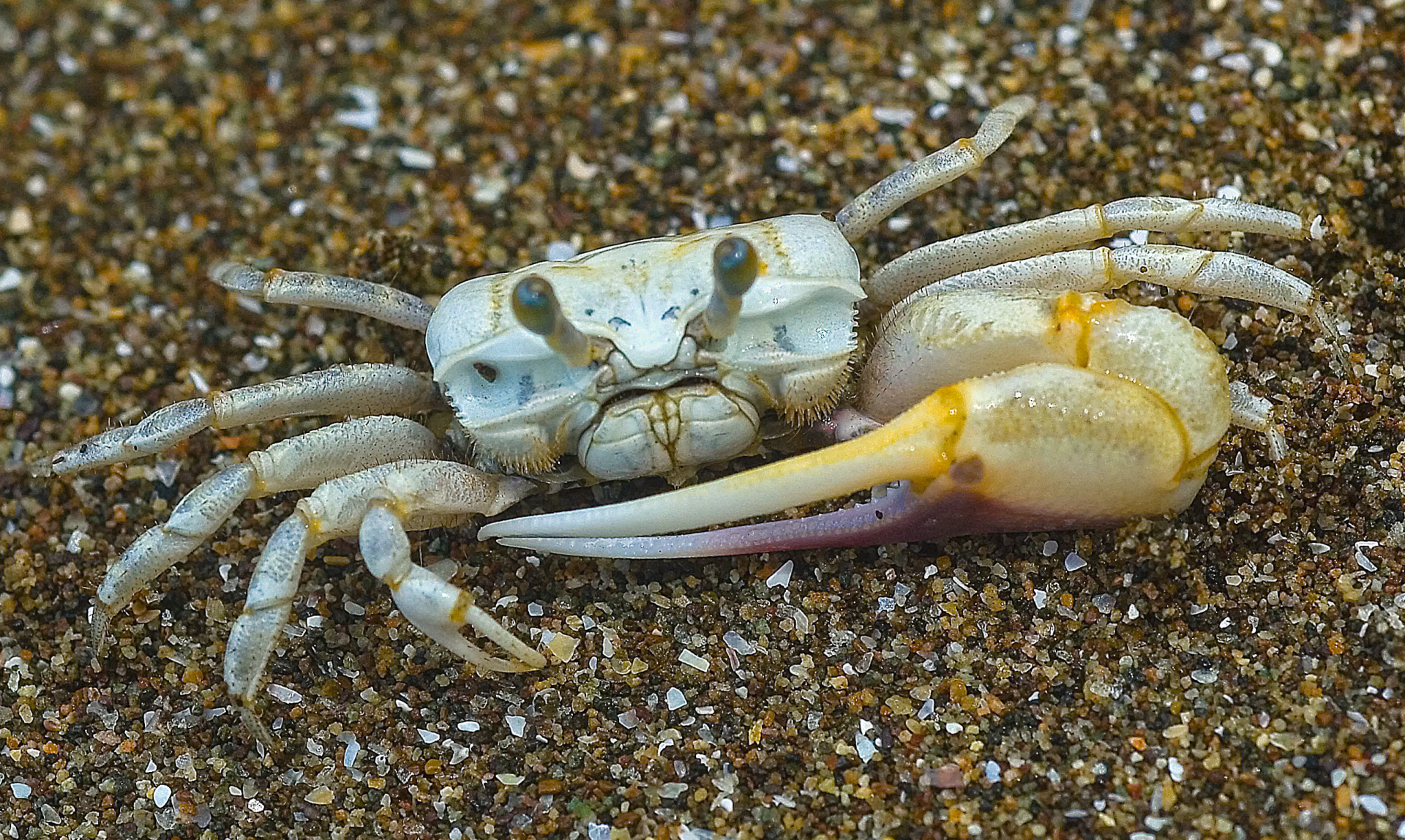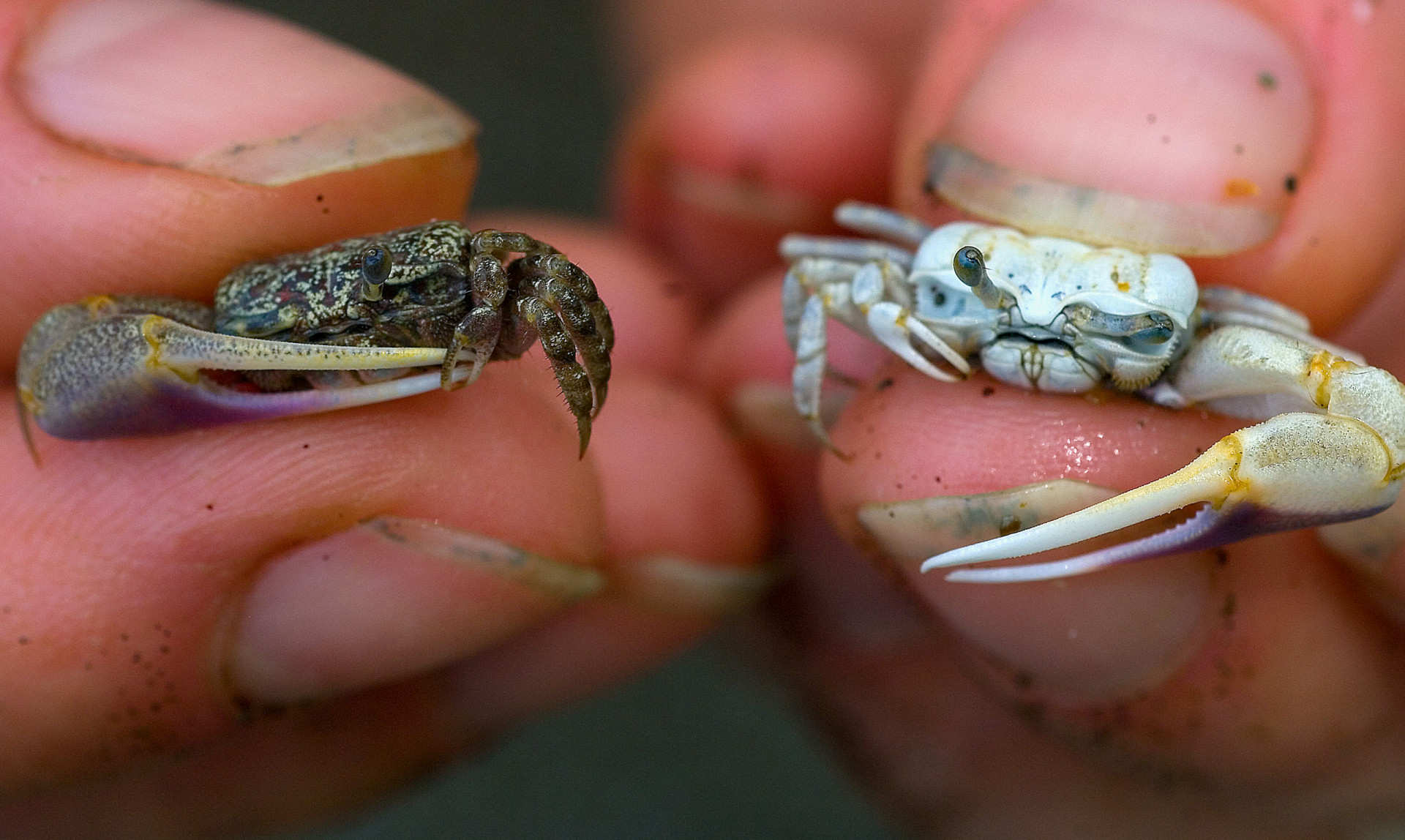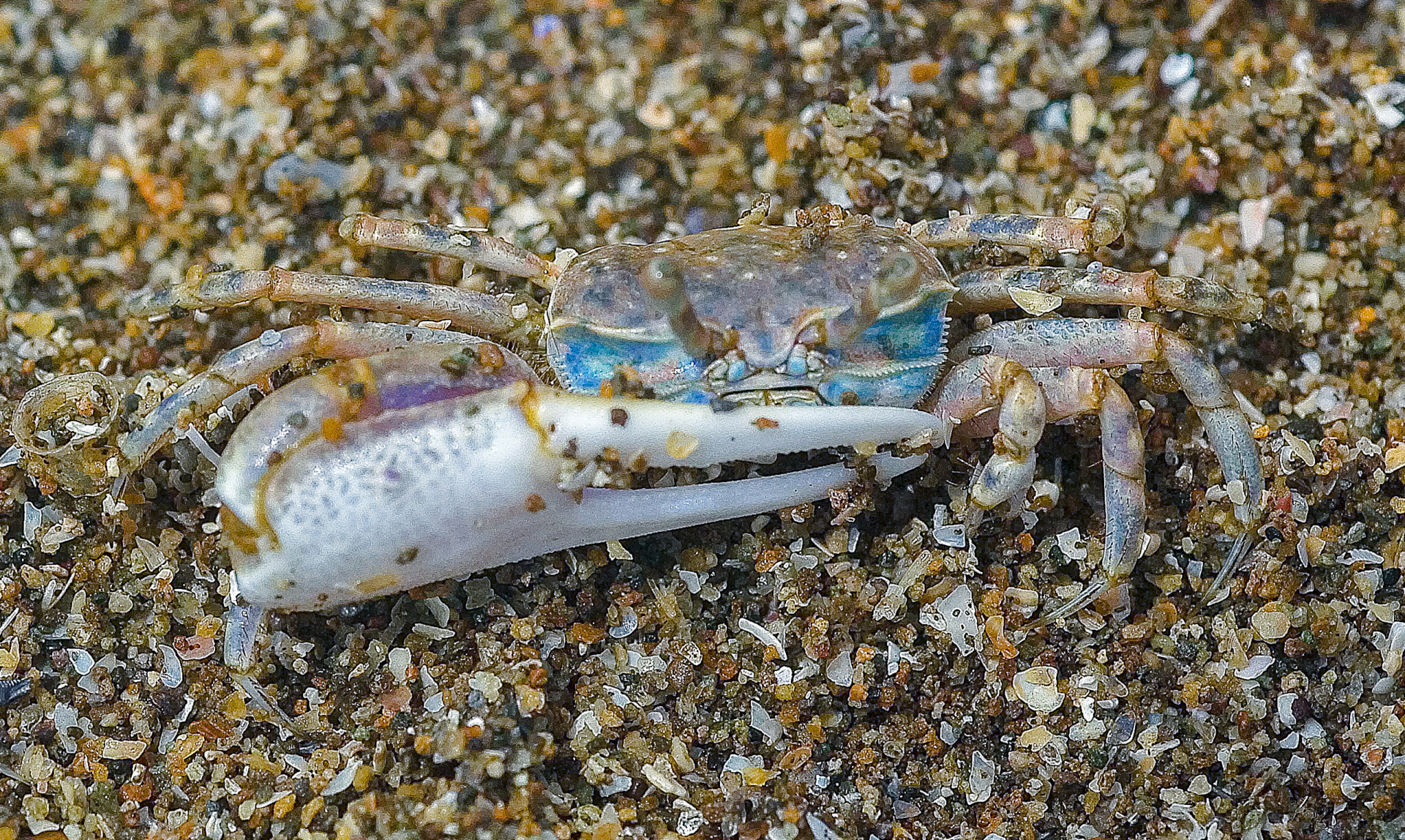Fiddling With Climate Change
How could climate change
affect fiddler crab reproduction?
Punta Culebra, Panama
A new study raises questions about how a common beach creature will sustain its populations if temperature swings become greater in the future.
One reason some species of fiddler crabs are so abundant on the beaches and mudflats around Panama City is that they reproduce year-round, closely timing reproduction around the high tides that increase success of offspring survival.
Many species maintain this cycle during the “cold” part of the tropical year when upwelling causes ocean surface temperature to drop, even though lower temperatures can produce timing errors that increase offspring mortality.
A new study by scientists at the Smithsonian Tropical Research Institute shows how two species of fiddler crab change behavior to maintain reproductive success even as temperatures fall.
Published May 15 in PLOS ONE, the study also speculates on how fiddler crabs respond to upwelling events that increase in intensity or frequency — two possible outcomes of climate change on Panama’s Eastern Pacific Ocean.
The researchers, led by Kecia Kerr of STRI and McGill University in Montreal, logged nearly eleven months of daily field sampling over a two-year period while observing reproductive behavior of Uca terpsichores and Uca deichmanni.
When temperatures were cooler, they found that U. terpsichores began courtship earlier to allow for longer incubation periods caused by cooler conditions.
This is the first demonstration of shifts in courtship timing as a behavioral mechanism that fiddlers employ to ensure reproductive success through seasonal temperature swings of up to 6 degrees Celsius.
“This mechanism of adjustment to changes in temperature has been shown for many species of birds in response to earlier onset of spring with climate change, but to date, we know very little about how marine organisms respond to temperature variation and in particular how organisms respond to short-term changes,” said Kerr.
More work remains. U. deichmanni courted at the same time, yet a previous study showed that they still released their larvae on the most favorable tides. Females of this species dig out their burrows during low tide making a 20 cm shaft to the surface and across the temperature gradient in the sediment. The authors think that the female moves up and down this shaft during incubation and thus control the temperature and development rate of embryos. This idea has not yet been tested however.
“By knowing the mechanism, you discover the limits to adaptive responses,” said STRI’s John Christy, a co-author. “And by knowing limits you can make predictions about how changes in temperature — which are predicted to increase in extremes and frequency with changes in climate — will affect reproductive success and, ultimately, population persistence through time.”
For example, what happens if temperatures change significantly during a reproductive cycle? U. terpsichores, which cannot change development rate once incubation begins, runs a greater risk of poorly timing larval release when compared to U. deichmanni, the researchers found. On the other hand, if prolonged cold water upwelling events are in the cards for climate change, “U. terpsichores should be able to adjust but, even if U. deichmanni females regulate temperature behaviorally, the limits of their thermoregulatory ability may be surpassed,” they conclude.



